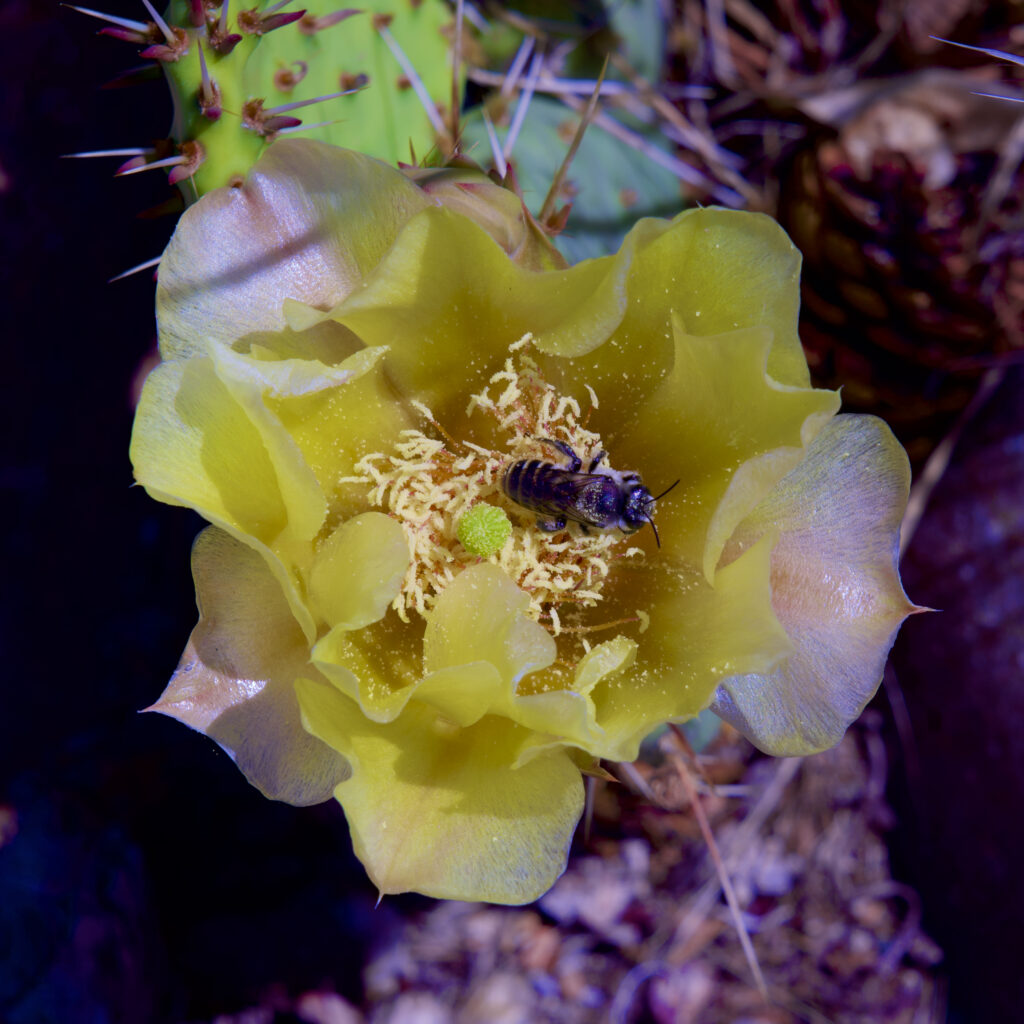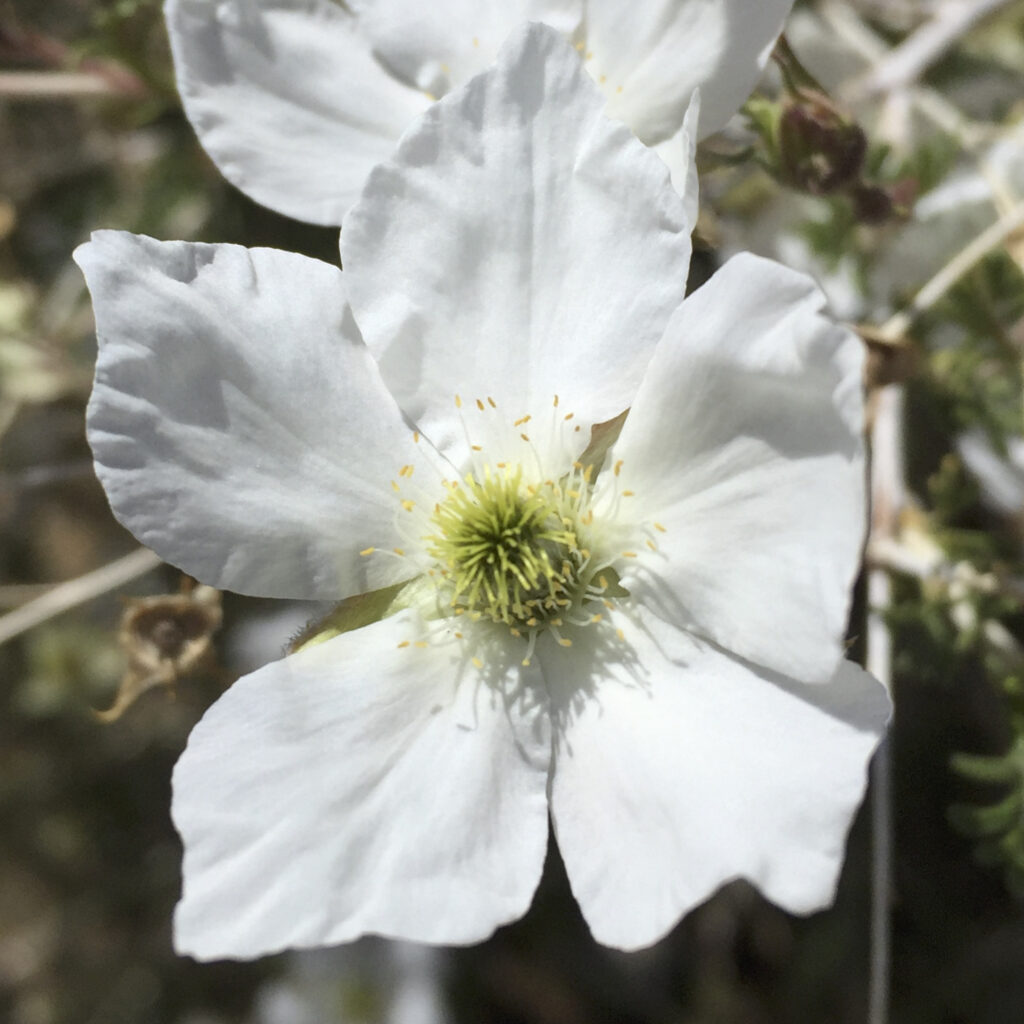I have long shown patients this graph of how the body grows new collagen tissue to repair damaged collagen strands in newly injured ligaments, tendons, fibrocartilage, etc.:
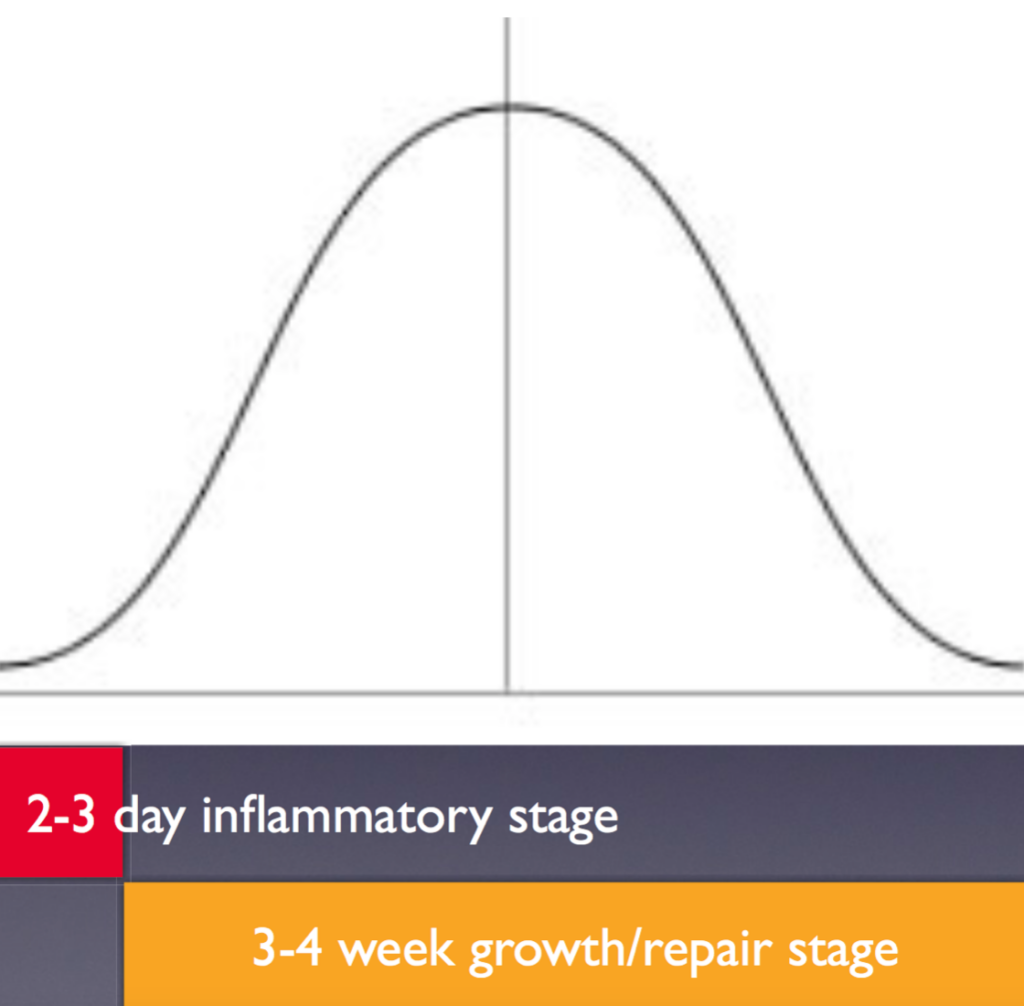
The horizontal axis shows a timeline of some inflammation, followed by 3-4 weeks of growth of new repair/replacement tissue. The curve represents how much work is being done, less at the beginning and end of the month, with more work peaking in the middle.
I have added a green line showing how much of the repair is accomplished in that one month in a young, growing person, or less in an adult:
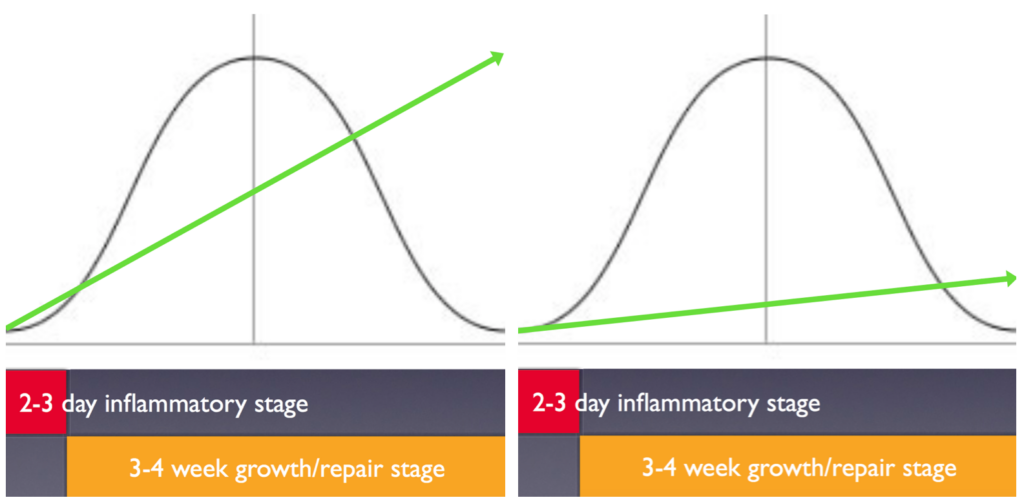
Since this is also a graph of how patients respond to PRP Stem Cell Joint Repair, the process in an adult requires repetition (usually with about 6 once-monthly injection procedures) to accumulate enough collagen in each damaged area to lead to secure repair:

But, nature is seldom performing in a staight-line manner, so the straight green line is a bit off. I happily received some clarification from Michael C. Makoid, Ph.D., Professor Emeritus, Creighton School of Pharmacy (Department of Pharmaceutics), and Creighton School of Medicine (Department of Pharmacology). For example, he provided a more acurate graph of one month of repair activity in a youth (blue) vs in an adult (red):
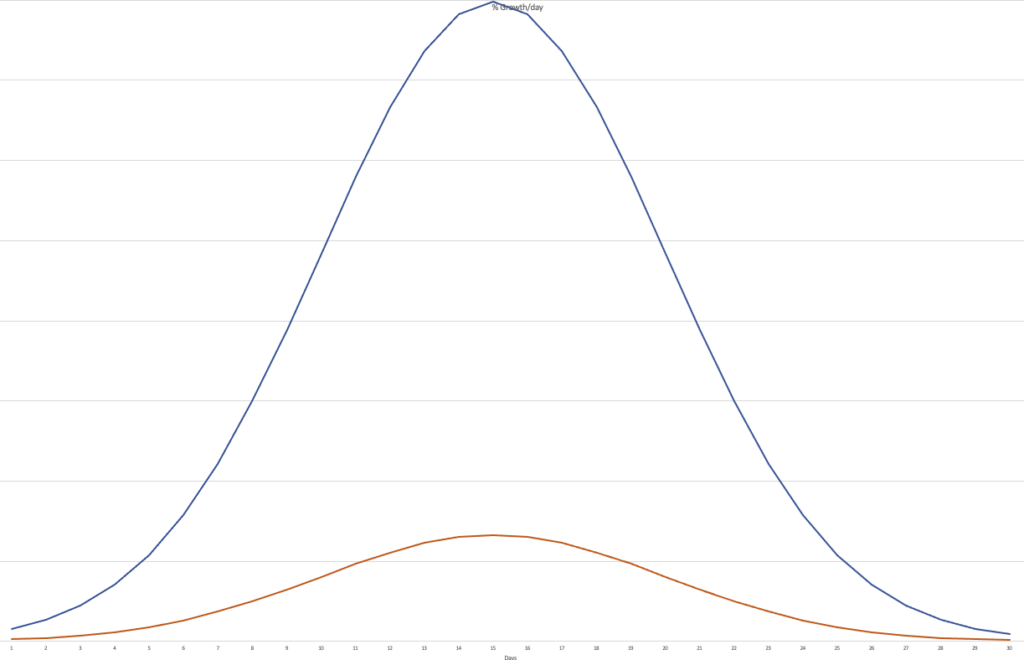
Below is Professor Makoid’s graph of new tissue growth achieved over one month, blue for a young person, red for an adult:
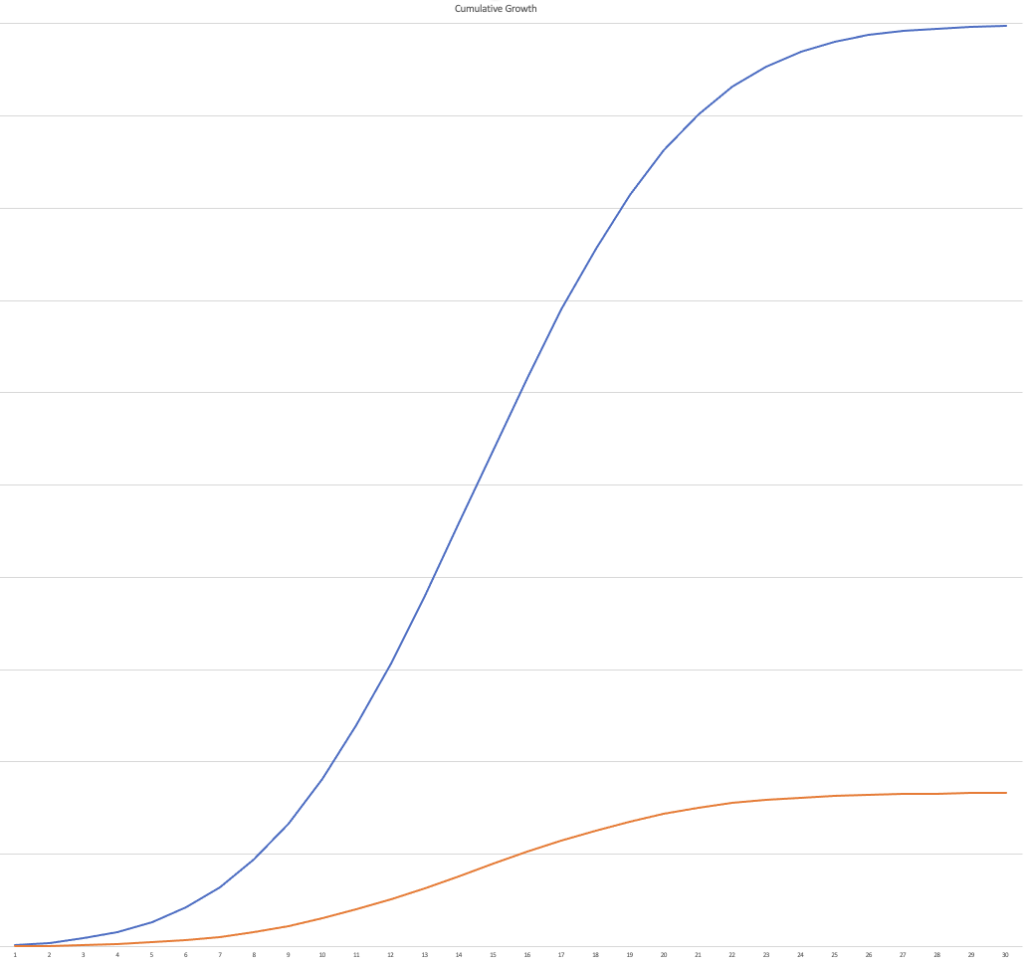
And, then, here is Professor Makoid’s representation of cumulative growth of new collagen tissue over 6 months of injection procedures. This is a more acurate graphing of what I drew as straight green lines above. The blue line below is the amazingly quick response of a young growing person, while the red line is the slower 6 month or so gradual process that adults generally need to go through to accumulate enough collagen at each site to achieve solid repair.

Thank you to Professor Makoid for the graphs!
Even without graphs, the flowers of Spring and Summer have been beautiful evidence of growth.
Dr. Jonas Skardis


